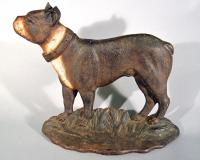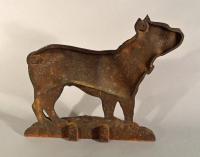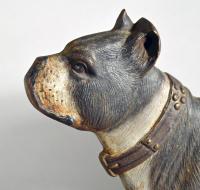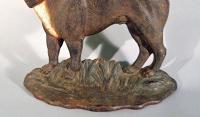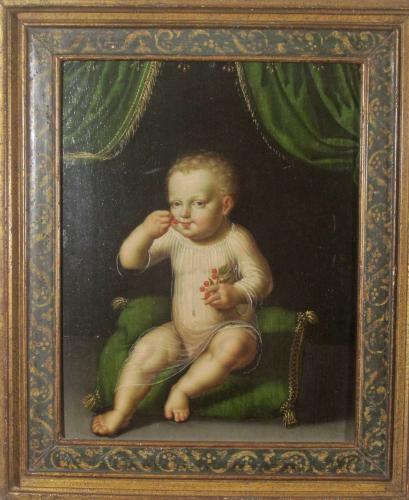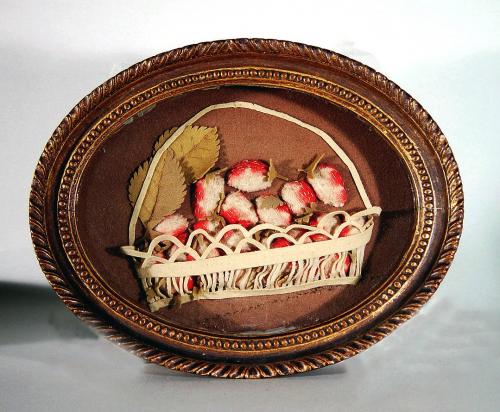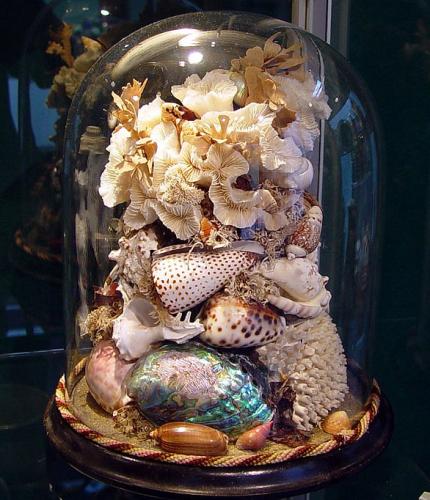
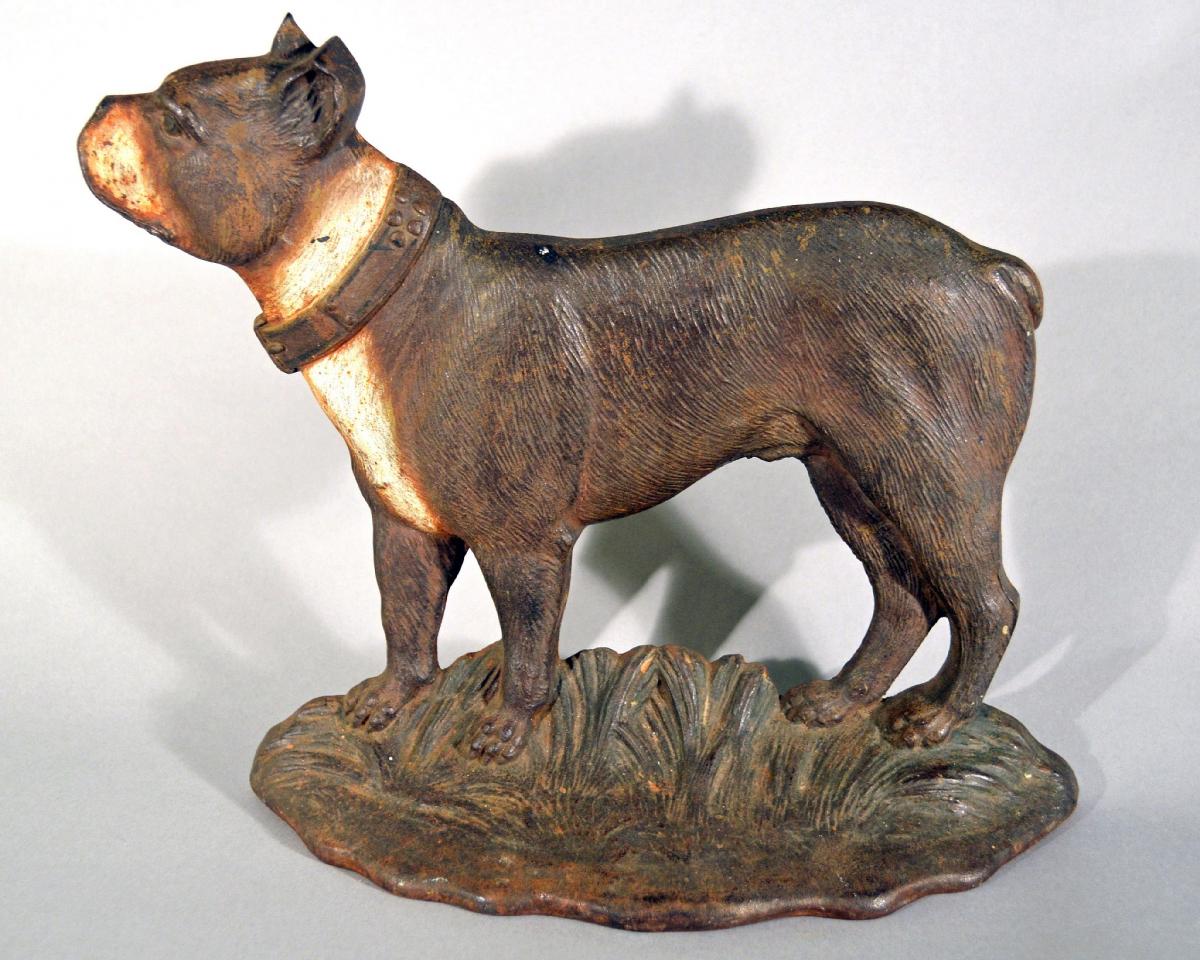
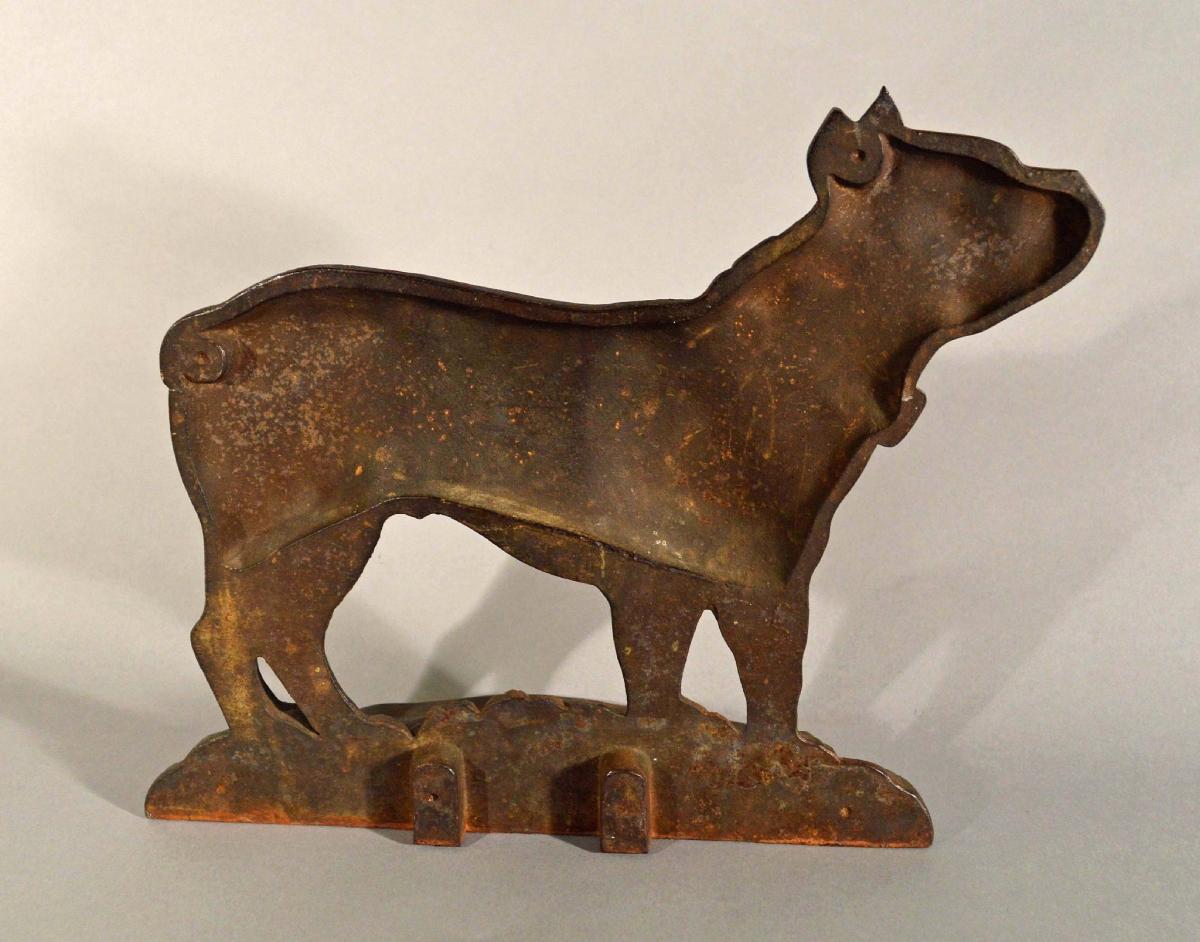
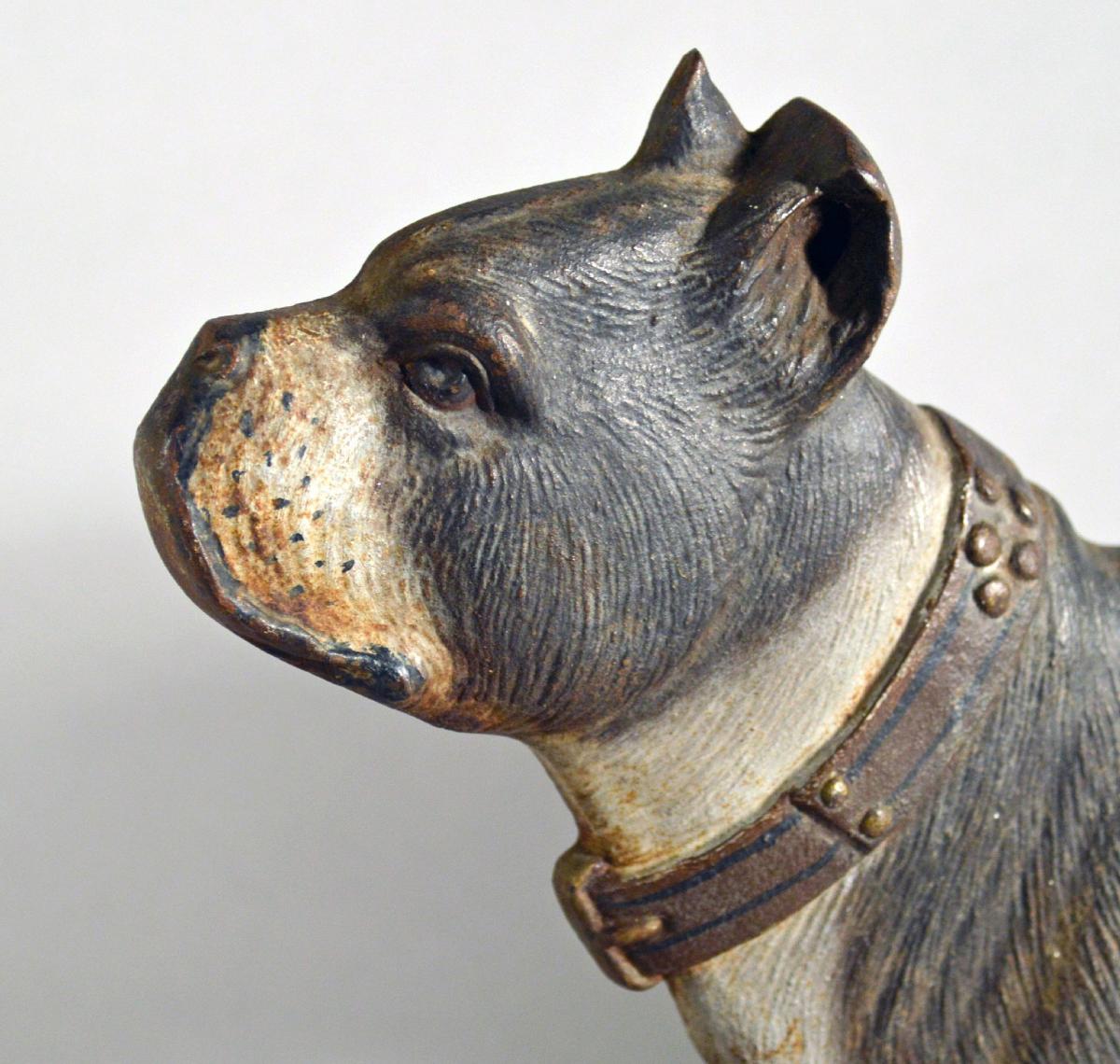
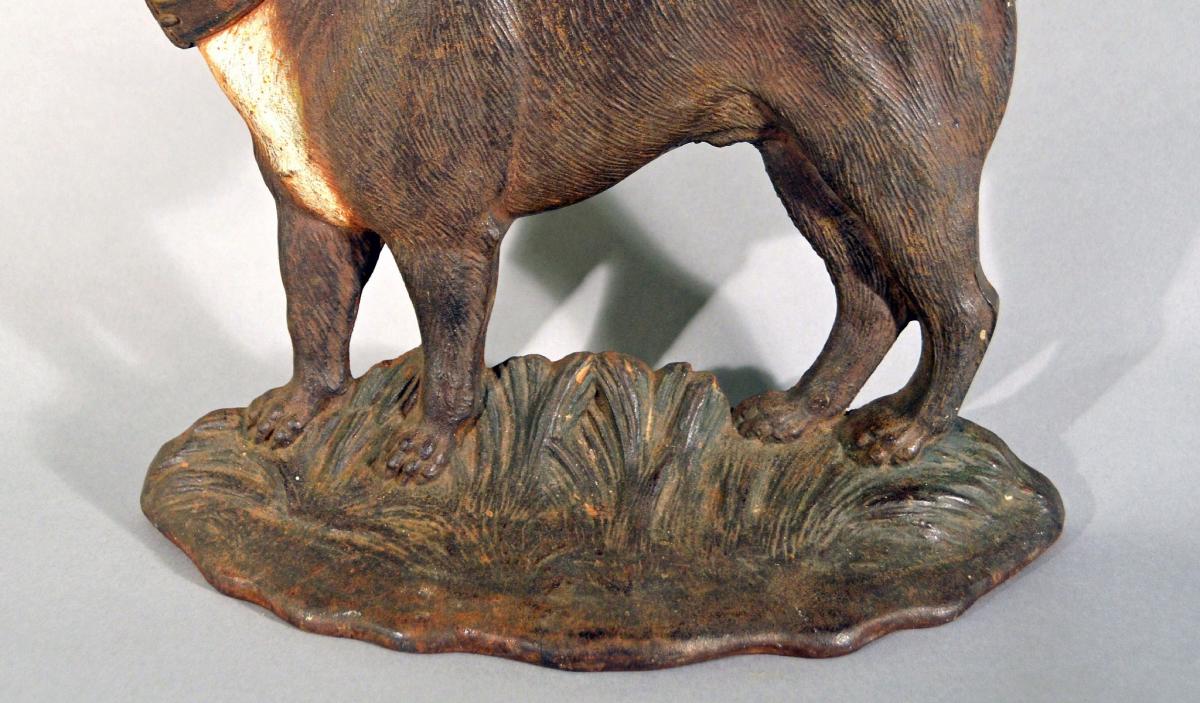
Price on application
This object is eligible for a Certificate of BADA Provenance
The BADA Standard
- Since 1918, BADA has been the leading association for the antiques and fine art trade
- Members are elected for their knowledge, integrity and quality of stock
- Our clients are protected by BADA’s code of conduct
- Our dealers’ membership is reviewed and renewed annually
- Bada.org is a non-profit site: clients deal directly with members and they pay no hidden fees
American Cast Iron Boston Terrier Door Stop-Bradley and Hubbard Company, Meriden CT.
Bradley & Hubbard.
Circa 1925.
Metal.
A finely modeled hollow half round cast form with natural brindle paint.
Model #7294-N.
See: The Doorstop Book, John and Nancy Smith, Page. 129.
Bradley & Hubbard.
Reference: http://www.si.edu/oahp/bradley_hubbard/thebradleyhubbardmfgco.htm.
The partnership of Nathaniel and William L. Bradley, Walter Hubbard, and Orson and Chitten Hatch began in Meriden, Connecticut in 1852 as Bradley, Hatch & Company. Clocks were the sole product of the newly formed company.
When the Hatch brothers sold their interests in the firm two years later, Nathaniel Bradley, William Bradley and Walter Hubbard formed a company which they named simply Bradley and Hubbard. By 1856, they were producing call bells and sewing machines, but clocks continued to be the main line of production throughout he 1850's and 1860's.
Many northern manufacturers prospered immensely during the Civil War due to the expanded market west of the Mississippi and increased foreign exports. Bradley and Hubbard was no exception, adding the production of flags, hoop skirts, spring measuring tapes and match safes during the war years.
The discovery of oil in Pennsylvania in 1859 also had a great impact on the product line of Bradley & Hubbard with the decision to begin production of kerosene burning lamps. By 1871, kerosene virtually replaced whale oil for heating and illumination and new ways of burning it more efficiently were needed.
Between 1868 and 1875, Bradley and Hubbard secured 33 patents relating to the design and mechanics of oil burning lamps (in all the company would eventually patent a total of 238 designs and mechanical devices). The company was again reorganised in 1875, this time as a joint stock company renamed The Bradley and Hubbard Manufacturing Company.
Growing rapidly throughout the 1880's, the company added new products such as architectural grilles, railings fences, window guards, and elevator enclosures. By the 1890's, the Bradley and Hubbard name was synonymous with high quality and artistic merit.
Their products were marketed not only in their own showrooms in New York, Boston, Chicago and Philadelphia, but also by a force of salesmen traveling throughout the country and by the large retail firms of Marshall Field & Company, Sears and Roebuck & Company, and Montgomery Ward & Company.
The Bradley and Hubbard Manufacturing Company survived the Great Depression, but after 88 years in business, it was sold in 1940 to the Charles Parker Company, also of Meriden. Famoous for its Parker sporting shotgun, the company also made household items such as coffee mills, waffle irons, lamps, locks, and door knockers.
Upon the acquisition of the Bradley and Hubbard factories, the Parker Comany instituted its Bradley and Hubbard Division with the stated intent of carrying on production of some products of the former company such as bathroom accessories, lighting fixtures, architectural bronzes and brass work.
Within a year and a half after the purchase, the United States entered into WWII and the Parker Company turned its attention to the war effort. As the war escalated, all metal production was diverted to war related goods, making it unlikely that much, if anything, from the Bradley and Hubbard line was produced, unless for military use.
By 1950 all references to a Bradley and Hubbard Division of the Parker Company had been dropped from the company's literature. Finally, in 1976, a spectacular blaze totally destroyed the long abandoned Bradley and Hubbard factory buildings.
Any records of the old Bradley and Hubbard Manufacturing Company that were still in the building at the time were either burned or lost in the rubble when the shell was afterwards demolished.
Dimensions
9 3/8 inches x 11 3/4 inchesStock number
NY07556-1The BADA Standard
- Since 1918, BADA has been the leading association for the antiques and fine art trade
- Members are elected for their knowledge, integrity and quality of stock
- Our clients are protected by BADA’s code of conduct
- Our dealers’ membership is reviewed and renewed annually
- Bada.org is a non-profit site: clients deal directly with members and they pay no hidden fees


